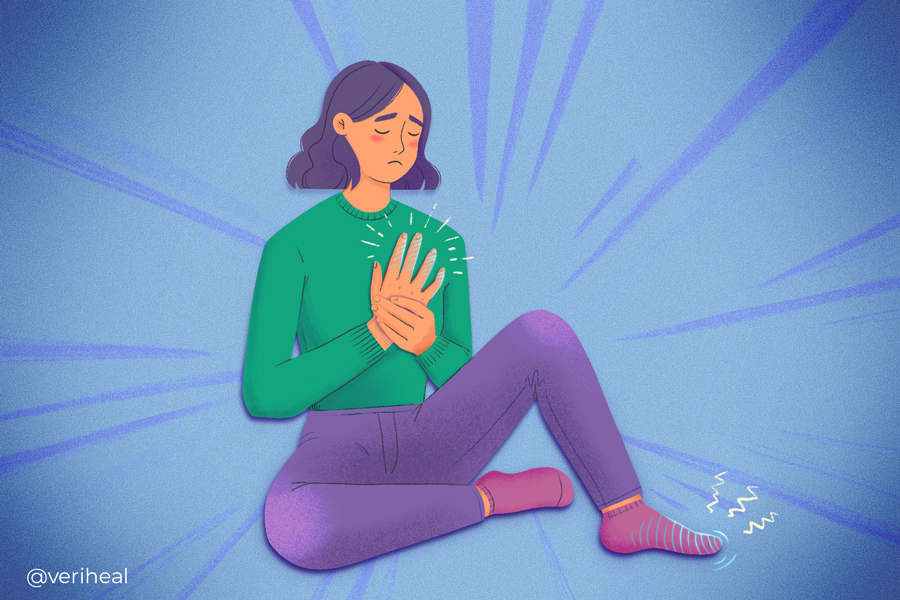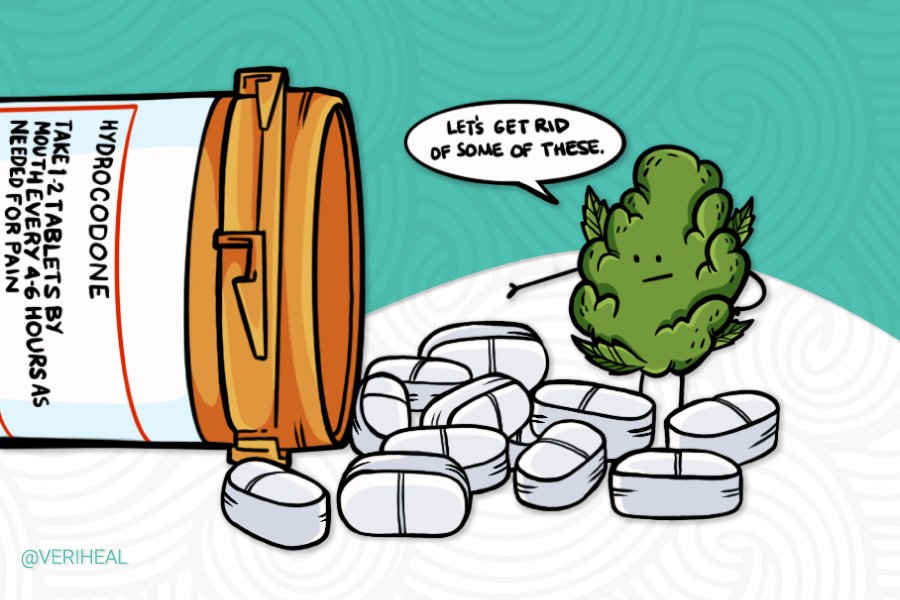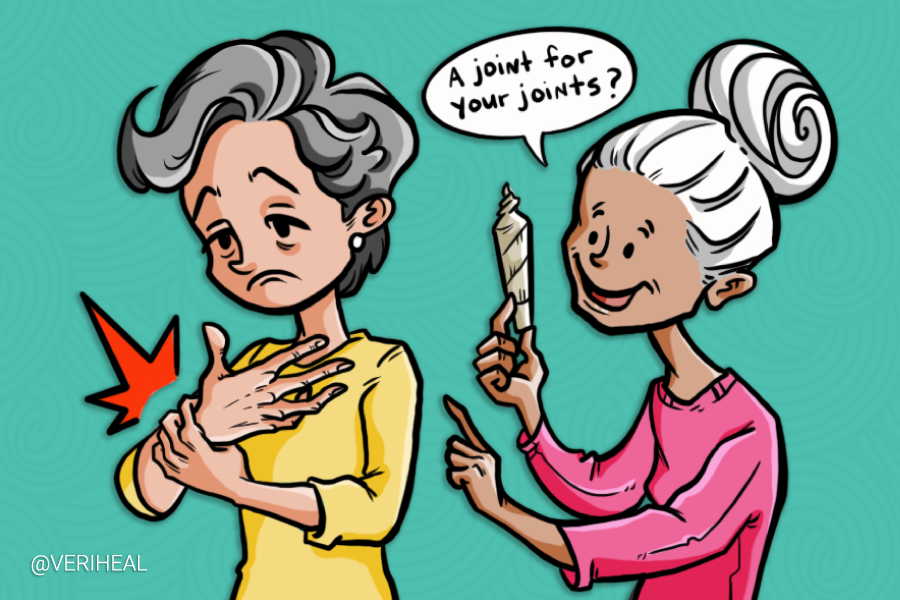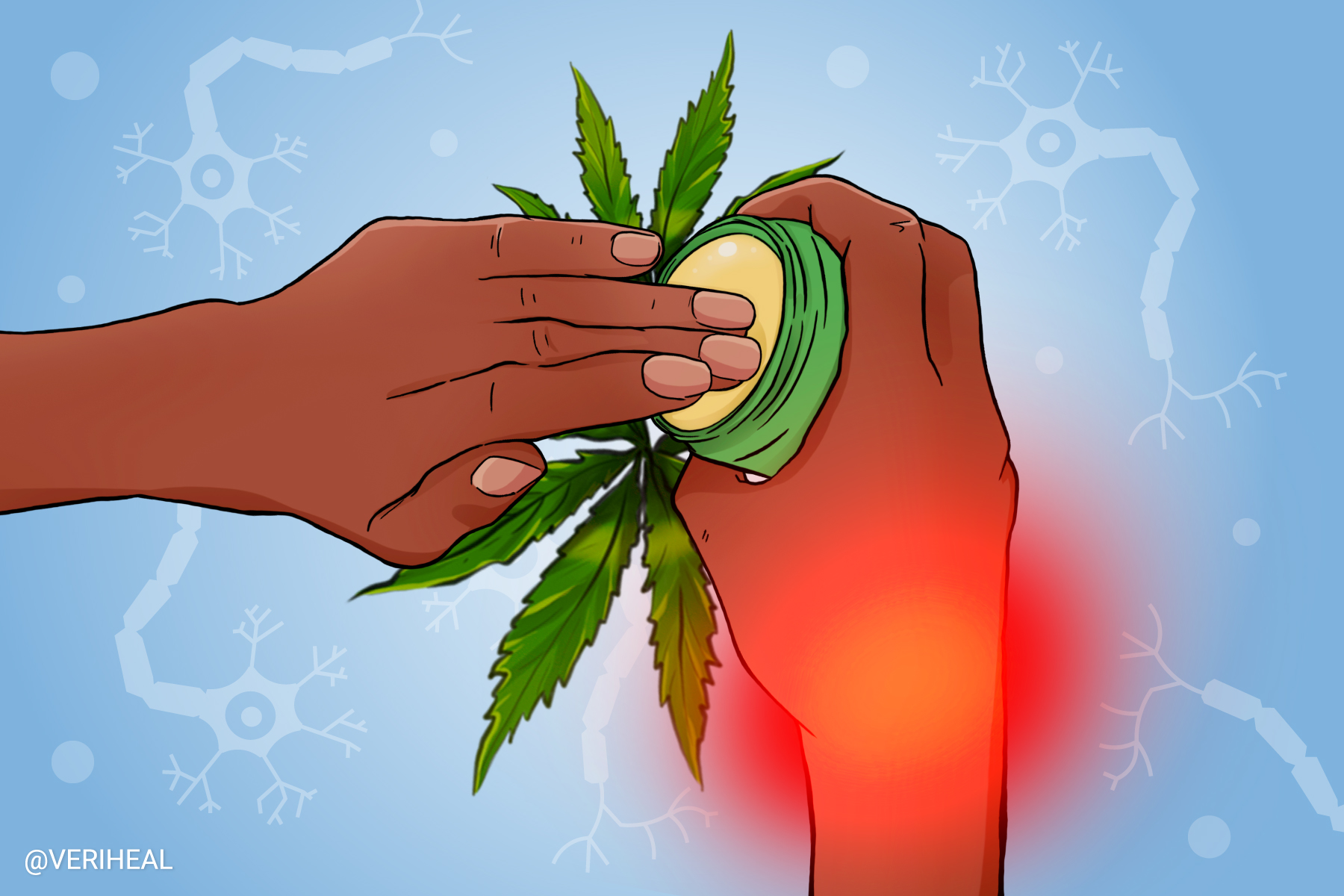Medical Marijuana May Ease Pain Symptoms of Spinal Stenosis

- Treating Spinal Stenosis with Medical Cannabis
- Different Treatment Recommendations for Spinal Stenosis
- Spinal Stenosis and Medical Cannabis: Considerations to Keep in Mind
- Understanding the Locations of Spinal Stenosis
- Causes of Spinal Stenosis
Spinal Stenosis is primarily characterized by back pain and nerve-type symptoms that include tingling and numbness in the hands, arms, feet, and legs. Many patients that have back pain caused by stenosis are finding that medical cannabis is useful for pain management.
Medical cannabis contains hundreds of chemicals called cannabinoids. The most well-known and studied cannabinoids are Δ9-tetrahydrocannabinol (THC) and cannabidiol (CBD). These cannabinoids interact with the CB1 and CB2 receptors, which are receptors to the endocannabinoid system (ECS). The endocannabinoid system consists of fat-based neurotransmitters. When cannabis meets the endocannabinoid system, the neurotransmitter levels shift and help control pain and reduce inflammation, two major components of spinal stenosis symptoms (3).
For more information on how the endocannabinoid system works, please see our page on endocannabinoids here.
Treating Spinal Stenosis with Medical Cannabis
There are several symptoms that are related to stenosis and many of these conditions have clinical evidence that medical marijuana may help you. Cannabis and CBD oil are good options for patients seeking to limit addictive pain relievers or gabapentin.
Arthritis & Inflammation
If your stenosis is caused by arthritis or some other form of inflammation, using both CBD and THC has demonstrated reductions in inflammation by modulating the immune system to reduce attacking itself and thereby reducing inflammation (3).
Please see our arthritis and inflammation pages for more information.
Acute Pain
Many patients with spinal stenosis also have pain that comes and goes. This is considered acute pain and may be effectively treated with medical cannabis as it acts like an analgesic, which is a medication that relieves pain. A review from Cannabis and Cannabinoid Research examined studies focusing on acute pain. Six trials with 678 participants examining oral and intramuscular use of cannabinoids show really promising results with a 95% confidence interval backing the results of these studies. Patients who received intramuscular cannabinoids showed a 95% reduction in acute pain compared to placebo (3). While oral consumption of cannabis was equivalent in reducing pain to the placebo, these studies are good groundwork and prove that high-quality research is still needed in this area.
Chronic pain
Many patients use the whole cannabis plant or a 1:1 combination of CBD to THC to help relieve their chronic pain. Most pain research focuses on neuropathic pain and patients who do not see symptom relief with traditional pain medications. Improving your chronic pain with cannabis may also help improve your sleep and quality of life (9).
Check out our page on treating chronic pain for more information.
Peripheral Neuropathy & Sciatica
Many spinal stenosis patients experience nerve pain in their arms, hands, feet, and/or legs. To learn more about how to target tingling, numbness, or warm nerve pain associated with your condition, please check out our neuropathy and sciatica information pages.
Different Treatment Recommendations for Spinal Stenosis
As always, it is recommended while beginning cannabis or CBD treatment to start with low doses and to slowly increase the dose over time. You do not have to feel impaired to get pain relief and it is appropriate for patients worried about feeling impaired to begin treatment with CBD only. Research supports that CBD use topically with lotions and patches may potentially reduce neuropathic pain (12). Of course, CBD use does not guarantee to be completely pain-free and may be part of a multimodal approach between you and your providers.
A task force meeting during PAINWeek 2020 has helped provide treatment guidelines for doctors prescribing medical cannabis for pain, including pain experienced by patients who have spinal stenosis. The task force recommends the following (1):
- Begin with 5mg of CBD twice a day and only add THC if there is no pain improvement with up to 40 mg of CBD.
- 2.5mg of THC should be introduced with CBD and gradually increased to 40mg of THC a day.
- Frail or elderly patients should begin with 1mg of THC per dose and gradually increase.
- Patients who have severe pain or previous cannabis use should begin with 2.5mg of CBD to THC (1:1 ratio) once or twice a day.
Spinal Stenosis and Medical Cannabis: Considerations to Keep in Mind
It is important to talk to your doctor before starting medical cannabis treatment as it is possible that it and the existing medications you are taking may have drug interactions or you may experience side effects. In addition, the long-term effects of cannabis or CBD are unknown in children, pregnant women, and the elderly population.
Cannabis may help improve your quality of life and reduce opiate use over time (3)(11).
Understanding the Locations of Spinal Stenosis
Stenosis or narrowing of the spinal column can occur anywhere along the spine. It is most often seen in the neck, or the cervical area of the spine, and the lower back, or the lumbar portion of the spine. It is also possible to get thoracic stenosis which is characterized by tingling or weakness at or below the abdomen (10). It can be mistaken for other conditions such as herniated disc or intervertebral disc disease.
Cervical
When spinal stenosis is in the vertebrae of the neck it is called cervical spinal stenosis. It is characterized by neck pain and possible balance problems. In addition, many patients experience issues with their arms or legs which include numbness and tingling sensations, muscle weakness, and loss of function in the hands. In extreme cases, patients can lose bladder or bowel control, which is considered a serious medical emergency (10).
Lumbar
Lumbar spinal stenosis occurs when the spinal column is narrowing in the lower back or the lumbar region of vertebrae. It is the most common type of spinal stenosis that patients experience. Besides the typical symptoms of lower back pain, patients can experience numbness or tingling in the legs or buttocks as well as sciatica (10). The pain and heaviness in the legs typically worsen when standing for long periods of time.
Many patients feel pain relief when they are bending slightly forward while sitting or walking (10). Severe cases can also cause bladder and bowel control issues like cervical spinal stenosis.
Causes of Spinal Stenosis
There are several causes of spinal stenosis. One factor of getting spinal stenosis is being over the age of 50. Other causes include (10):
- Bone overgrowth or bone spurs
- Bulging or herniated spinal disks
- Thickened spinal ligaments
- Spinal fractures spinal injuries
- Spinal cord cysts or tumors
- Congenital spinal stenosis
- Osteoarthritis
Note: Veriheal does not intend to give this as professional medical advice. Do not attempt to self-diagnose, or prescribe treatment based on the information provided on this page. Always consult a physician before making any decision on the treatment of a medical condition.
1. Basen, R. (2020, September 13). New Guidelines Issued on Medical Cannabis for Chronic Pain. Medical News and Free CME Online. https://www.medpagetoday.com/meetingcoverage/painweek/88593
2. First, L., Douglas, W., Habibi, B., Singh, J. R., & Sein, M. T. (2020). Cannabis use and low-back pain: A systematic review. Cannabis and Cannabinoid Research, 5(4), 283-289. https://www.liebertpub.com/doi/10.1089/can.2019.0077
3. Gazendam, A., Nucci, N., Gouveia, K., Abdel Khalik, H., Rubinger, L., & Johal, H. (2020). Cannabinoids in the management of Acute PAIN: A systematic review and meta-analysis. Cannabis and Cannabinoid Research, 5(4), 290–297. https://www.liebertpub.com/doi/10.1089/can.2019.0079
4. Green, J. (2020, November 17). Cbd skin cream mitigates chronic back pain says new study. Retrieved February 21, 2021, from https://cannatechtoday.com/cbd-skin-cream-mitigates-chronic-back-pain-says-new-study/
5. Mlost, J., Bryk, M., & Starowicz, K. (2020). Cannabidiol for Pain Treatment: Focus on Pharmacology and Mechanism of Action. International Journal of Molecular Sciences, 21(22), 8870. https://www.ncbi.nlm.nih.gov/pmc/articles/PMC7700528/
6. Mondello, E., Quattrone, D., Cardia, L., Bova, G., Mallamace, R., Barbagallo, A. A., Mondello, C., Mannucci, C., Di Pietro, M., Arcoraci, V., & Calapai, G. (2018). Cannabinoids and spinal cord stimulation for the treatment of failed back surgery syndrome refractory pain. Journal of pain research, 11, 1761–1767. https://www.ncbi.nlm.nih.gov/pmc/articles/PMC6134407/
7. Raja A, Hoang S, Patel P, et al. Spinal Stenosis. [Updated 2020 Aug 22]. In: StatPearls [Internet]. Treasure Island (FL): StatPearls Publishing; 2020 Jan-. Available from: https://www.ncbi.nlm.nih.gov/books/NBK441989/
8. Russo E. B. (2008). Cannabinoids in the management of difficult to treat pain. Therapeutics and clinical risk management, 4(1), 245–259. https://www.ncbi.nlm.nih.gov/pmc/articles/PMC2503660/
9. Shannon, S., Lewis, N., Lee, H., & Hughes, S. (2019). Cannabidiol in Anxiety and Sleep: A Large Case Series. The Permanente journal, 23, 18–041. https://www.ncbi.nlm.nih.gov/pmc/articles/PMC6326553/
10. Spinal stenosis: What is it, symptoms, causes, treatment & surgery. (n.d.). Retrieved February 21, 2021, from https://my.clevelandclinic.org/health/diseases/17499-spinal-stenosis
11. Vulfsons, S., Minerbi, A., & Sahar, T. (2020). Cannabis and Pain Treatment-A Review of the Clinical Utility and a Practical Approach in Light of Uncertainty. Rambam Maimonides medical journal, 11(1), e0002. https://www.ncbi.nlm.nih.gov/pmc/articles/PMC7000155/
12. Xu DH, Cullen BD, Tang M, Fang Y. The Effectiveness of Topical Cannabidiol Oil in Symptomatic Relief of Peripheral Neuropathy of the Lower Extremities. Current Pharmaceutical Biotechnology. 2020;21(5):390-402. https://pubmed.ncbi.nlm.nih.gov/31793418/
13. Yassin, M., Garti, A., & Robinson, D. (2016). Effect of medicinal cannabis therapy (mct) on severity of chronic low back pain, sciatica and lumbar range of motion. Journal of Anesthesia & Pain Medicine, 1(2). https://anaesthesia-painmedicine.imedpub.com/effect-of-medicinal-cannabis-therapy-mct-on-severity-of-chronic-low-backpain-sciatica-and-lumbar-range-of-motion.php?aid=17737








